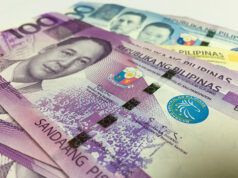Moody’s Analytics sees faster Q1 growth
By Melissa Luz T. Lopez
Senior Reporter
ECONOMIC GROWTH likely picked up pace last quarter though still slower than 2018’s full-year target, Moody’s Analytics said, citing improving exports that added to the boost from upbeat consumer spending and investments.
Philippine gross domestic product (GDP) likely grew by 6.8% year-on-year, the sister company of Moody’s Investors Service said, ahead of official data due early next month. If realized, the pace will pick up from the downward-revised 6.5% clocked in October-December, as well as the 6.4% growth reported for the first quarter of 2017.
The projection compares to a 7-8% target set by the government for the entire 2018.
Still, the research firm remains bullish on the Philippine economy, noting that the current momentum should allow the country to remain one of Asia’s fastest-growing major economies over the next few years.
“The economy is in somewhat of a sweet spot,” Moody’s Analytics said in a data preview published on Friday.
“Consumer spending is rising at a healthy pace, thanks to steady inflows of overseas worker remittances and a firm labor market. Investment has been robust and is likely to remain strong as the government boosts infrastructure development.”
Cash remittances from overseas Filipino workers reached $4.647 billion in the first two months, 7.1% more than the $4.338 billion received in the comparable period last year.
These inflows, in turn, are expected to fuel stronger domestic spending, which contributes about 60% to overall economic growth. These transfers will give families more money to spend, with the weaker exchange rate providing greater dollar values once converted to the peso.
Moody’s also noted that exports are receiving a boost from an “upswing in external demand.”
The International Monetary Fund (IMF) said last week that the Philippines will benefit from improving global growth output by way of increased trade and remittances, which will also lead to a stronger appetite for export products and bigger business process outsourcing sales.
The IMF and the World Bank expect the Philippine economy to expand by another 6.7% this year, while the Asian Development Bank sees a faster climb at 6.8%.
Philippine GDP grew by 6.7% in 2017, against a 6.5-7.5% target.
The government targets a nine percent growth in exports this year following a 10.2% surge clocked last year.
Favorable demographics — given the country’s young and skilled population — assure a rosy outlook for the Philippines over the coming years, the Moody’s unit added.
Economic managers have expressed confidence that the local economy has sustained its momentum, with current signs pointing that the 7-8% goal is attainable for 2018.
Public spending surged to P468.9 billion as of end-February, up 26% from 2017’s first two months, according to Treasury data. Disbursements for infrastructure and capital outlays reached P93.8 billion, up by a third from the comparable period in 2017, according to the Budget department.



